Weekly Current Affairs (22nd to 31st May 2025) | General Test Preparation for CUET UG - CUET Commerce PDF Download
Rahveer Scheme for Accident Victims
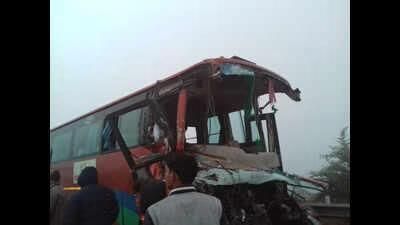 Why in News?
Why in News?
- Madhya Pradesh has launched the Rahveer Scheme aimed at encouraging good Samaritans who assist accident victims. This initiative was announced during a special cabinet meeting at the historic Rajwada Fort in Indore, with the primary goal of reducing road fatalities in a state that recorded over 54,000 accidents in 2022.
Key Takeaways
- The scheme rewards individuals with Rs 25,000 for transporting accident victims to medical facilities.
- It alleviates fears of police harassment for those who help, promoting prompt medical assistance.
Additional Details
- Financial Implications: The Madhya Pradesh cabinet has allocated Rs 3,867 crore for various development initiatives, including the Rahveer Scheme, which aims to improve social welfare, urban planning, and healthcare.
- Employment-Oriented Schemes: The Lokmata Devi Ahilyabai Holkar Training Scheme has been approved to enhance employment opportunities through skill development, providing annual interest subsidies on loans for eligible individuals.
- Support for Women in Workforce: Construction of 26 working women hostels has been sanctioned to ensure safe housing and modern amenities, facilitating women's entry into the workforce.
- Urban Development Initiatives: Metropolitan Development Authorities have been established in key cities like Indore and Bhopal to oversee urban planning and enhance living conditions.
- Healthcare Enhancements: Significant investments have been made in healthcare infrastructure, including Rs 773 crore for the modernization of Indore's MY Hospital and Rs 321 crore for Rewa's district hospital.
- Cultural and Spiritual Projects: A Rs 2,100 crore initiative has been approved for a statue of Adi Shankaracharya in Omkareshwar to promote Sanatan traditions and establish hostels and a spiritual research centre.
The Rahveer Scheme and accompanying initiatives reflect the state's commitment to improving public safety, healthcare, and employment opportunities while fostering a supportive environment for women and encouraging community involvement in emergency situations.
Delhi Government Subsidy for Rooftop Solar Panels
 Why in News?
Why in News?
- The Delhi government has recently introduced a subsidy program aimed at encouraging households to install rooftop solar panels. This initiative is designed to foster the use of clean and affordable energy across the national capital, with a target to install solar panels in 230,000 homes over the next three years.
Key Takeaways
- The total subsidy for solar panel installations is Rs 1,08,000.
- The initiative is part of the broader Free Electricity Scheme.
- The allocated budget for this program is Rs 50 crore.
- Projected savings for households are around Rs 4,200 per month on electricity bills.
Additional Details
- Subsidy Structure: The subsidy consists of two parts: the central government contributes Rs 78,000 for each 3 kW solar panel installation, while the Delhi government adds Rs 30,000.
- Concerns Over Budget: Experts have expressed worries that the budget of Rs 50 crore, which equates to approximately Rs 2,174 per unit, may not be sufficient to support the ambitious goal of 230,000 installations.
- Implementation Challenges: Achieving the target will require a robust supply chain and a well-trained workforce, which are currently seen as potential hurdles.
- Financial Partnerships: The Delhi government is looking to collaborate with financial institutions to provide accessible loan options, enabling consumers to adopt solar energy affordably.
- Policy Amendments: Recent changes to the Delhi Solar Policy 2023 allow domestic consumers to receive subsidies of up to Rs 30,000 per month, aimed at reducing reliance on the power grid.
This subsidy initiative not only promotes renewable energy but also seeks to improve energy affordability for Delhi residents. However, the success of the program will depend on careful implementation and adequate funding.
Urban Forests in India
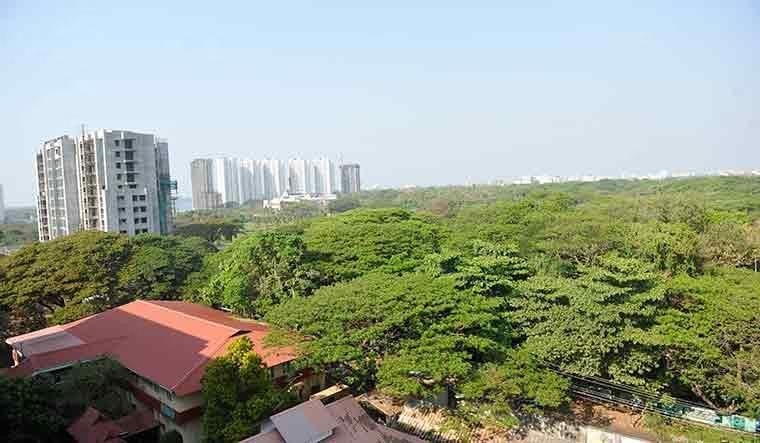 Why in News?
Why in News?
- Urban forests are increasingly recognized as essential components for the ecological and social well-being of urban areas. They provide a multitude of benefits, including enhancing air quality and supporting biodiversity. Recent events underline the critical need to safeguard these green spaces in India, particularly in the context of rapid urbanization.
Key Takeaways
- Urban forests are crucial for combating climate change by absorbing carbon dioxide and pollutants.
- Rapid urbanization threatens these green spaces, leading to habitat destruction.
- Judicial actions have played a significant role in protecting urban forests from illegal tree felling.
- The Government of India is promoting urban forestry through various initiatives.
- Community engagement is vital for the conservation and protection of urban forests.
Additional Details
- Significance of Urban Forests: Urban forests are vital in mitigating climate change effects. They can remove about one ton of air pollutants annually per hectare of trees, manage stormwater runoff to reduce flooding risks, and provide essential habitats for endangered species.
- Impact of Urbanisation: The rapid expansion of urban areas often leads to the destruction of forested land for development, as seen with the Kancha Gachibowli forest in Hyderabad.
- Judicial Interventions: Landmark legal cases, such as the Godavarman case, have broadened the definition of forests, strengthening legal protections against illegal deforestation.
- Government Initiatives: The Nagar Van Yojana aims to create 1,000 urban forests by 2027, complementing policies like the National Forest Policy that promote environmental sustainability.
- Community Engagement: Grassroots movements like the Save Aarey Forest in Mumbai demonstrate the power of public participation in conservation efforts.
- Environmental Legislation: Articles 21, 48A, and 51A(g) of the Indian Constitution affirm the right to a healthy environment, empowering citizens to advocate for urban forest protection.
- Challenges Ahead: Despite existing frameworks, urban expansion and climate change continue to pose serious threats to green spaces, necessitating collaboration among citizens, policymakers, and environmentalists.
In conclusion, urban forests are indispensable for maintaining ecological balance and enhancing the quality of life in cities. Protecting these vital ecosystems requires concerted efforts from all sectors of society.
India’s Renewable Energy Growth and Challenges
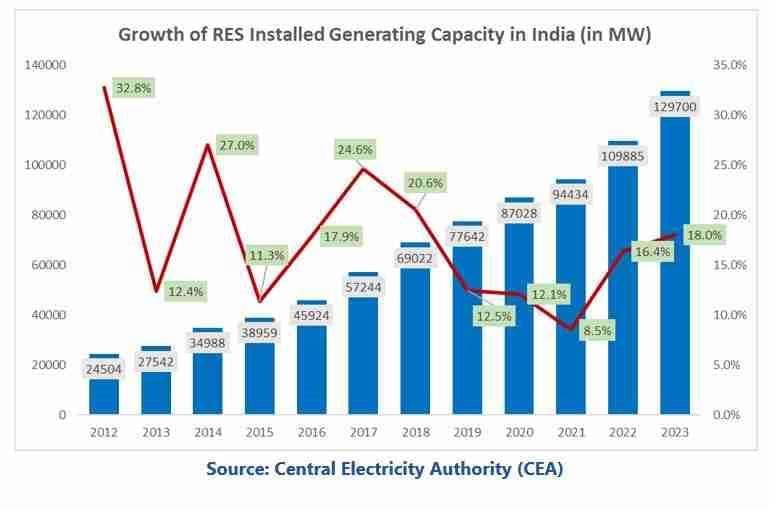 Why in News?
Why in News?
- India has experienced significant growth in renewable energy installations over the past few years. However, the actual generation of electricity from these renewable sources has not met expectations. A recent report by Climate Action Tracker highlights the challenges India faces in achieving its renewable energy objectives amidst increasing electricity demand and severe weather conditions.
Key Takeaways
- India has installed approximately 175 GW of renewable energy capacity as of 2023.
- Renewables contributed only about 18% to the total electricity generation, with coal dominating at 75% as of 2024.
- Electricity demand surged by 14% in May 2024 due to extreme heat.
- India needs to significantly reduce its reliance on coal to meet international climate goals.
Additional Details
- Current Status of Renewable Energy:As of 2023, India’s renewable energy capacity includes:
- 73 GW of solar energy
- 45 GW of wind energy
- 47 GW of hydro energy
- 10 GW of bioenergy
- Electricity Generation Trends: In 2024, India’s total electricity generation was 2,058 TWh, up from 937 TWh in 2010. The share of renewables increased only slightly from 15% in 2010 to 20% in 2024, indicating a stable energy mix despite growth in both coal and renewables.
- Future Projections: To align with a climate-compatible pathway, India must reduce coal's share in electricity generation to 17-19% by 2030 and phase it out by 2040, requiring substantial international financial support.
- International Comparisons: Compared to 15 other countries, India's progress in renewable energy is slower, with countries like Norway and Switzerland achieving higher levels of decarbonization.
- Need for International Support: To meet ambitious renewable energy targets of 52-65% by 2030 and 91-96% by 2040, India will require considerable international assistance.
In conclusion, while India has made notable strides in renewable energy capacity, the gap between installed capacity and actual generation poses significant challenges. Addressing these issues effectively is crucial for India to meet its energy demands and climate commitments.
Antimicrobial Resistance and Animal Health in 2025
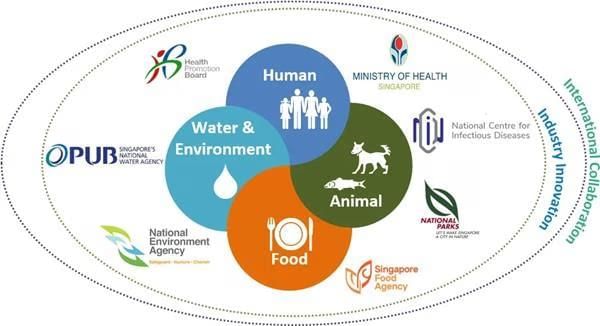 Why in News?
Why in News?
- The issue of antimicrobial resistance (AMR) is increasingly recognized as a significant threat to global health and food security. A recent report released by the World Organisation for Animal Health (WOAH) on May 24, 2025, highlights the potential catastrophic impacts of AMR by the year 2050, indicating that two billion people could face food insecurity and the global economy might suffer a loss of $100 trillion if urgent actions are not implemented.
Key Takeaways
- AMR threatens both human and animal health due to the misuse of antimicrobial drugs.
- Fluoroquinolones constitute 15.8% of antimicrobials used in aquaculture, raising environmental concerns.
- Between 2020 and 2022, there was a 5% decline in antimicrobial use in animals, with Europe seeing a 23% reduction.
- Improved hygiene and biosecurity could lead to a potential $120 billion economic benefit by 2050.
Additional Details
- Antimicrobial Resistance (AMR): AMR occurs when pathogens, including bacteria, viruses, and fungi, evolve to resist drugs, primarily due to the overuse and misuse of antibiotics in agriculture and healthcare.
- Infectious Animal Diseases: The report notes the increasing spread of infectious diseases among animals, with nearly half of these being transmissible to humans, posing a significant public health risk.
- High-profile diseases like African Swine Fever (ASF) and avian influenza are spreading to new regions, influenced by factors such as climate change and international trade.
- In 2024, ASF expanded over 1,800 kilometers to Sri Lanka, severely disrupting economies and threatening global pork supply.
- Vaccination has emerged as a crucial tool in disease management, although global access remains uneven.
- The report emphasizes the necessity of international cooperation for effective management of AMR and animal diseases.
In conclusion, addressing antimicrobial resistance and managing animal health is vital for ensuring food security and protecting public health. Global collaboration and improved practices are essential to mitigate these pressing challenges.
Integrated Theatre Commands
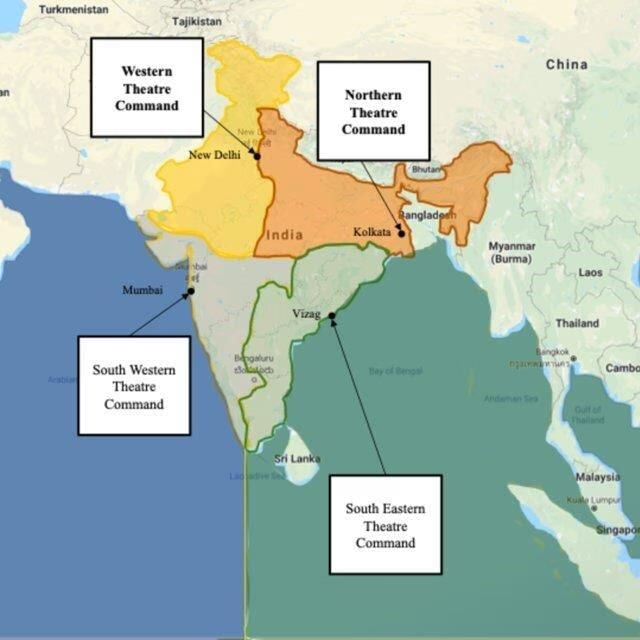 Why in News?
Why in News?
- On May 24, 2025, the Indian armed forces are undergoing a significant transformation with the introduction of Integrated Theatre Commands (ITC). This initiative is aimed at enhancing operational efficiency and fostering collaboration among different branches of the military.
Key Takeaways
- The introduction of ITC is part of a broader strategy to modernize India's military capabilities.
- Theatre commanders will focus on operational execution, while Service Chiefs will handle the 'Raise, Train and Sustain' (RTS) functions.
- The emphasis on jointness among the Army, Navy, and Air Force is crucial for the success of ITC.
Additional Details
- Theatre Commanders: Responsible for real-time military operations and strategic deployments.
- Service Chiefs: Ensure that military forces are raised, trained, and sustained effectively.
- Jointness among the services will involve collaborative training exercises and shared logistics.
- The transition faces challenges such as historical resistance to change and logistical hurdles in physical integration.
- The political context supports the establishment of three primary theatre commands focused on the northern and western land borders and a maritime command for coastal defense.
- This restructuring is one of the most significant changes in the Indian military since independence, aiming to create a more agile and responsive force.
The implementation of Integrated Theatre Commands is expected to enhance operational capabilities and foster a culture of integration within the armed forces, addressing contemporary security challenges effectively.
Saudi’s TOURISE Initiative
 Why in News?
Why in News?
- On May 26, 2025, Saudi Arabia launched TOURISE, a global platform designed to revolutionize the tourism industry. This initiative aims to connect influential figures across various sectors, including tourism, technology, investment, and sustainability. It emerges as part of the kingdom's strategy to enhance its status as a premier global tourism destination, following the successful achievement of its Vision 2030 goal of attracting over 100 million visitors by 2024.
Key Takeaways
- TOURISE promotes collaboration and innovation within the tourism sector.
- The platform aims to unlock investment opportunities and address sustainability challenges.
- It focuses on shaping global tourism policies and practices.
- TOURISE will host its inaugural summit in Riyadh in November 2025.
Additional Details
- Objectives of TOURISE: The initiative aims to create an environment that fosters collaboration among leaders to share insights and strategies, unlock new investments in tourism infrastructure, and promote sustainable tourism practices.
- Significance: TOURISE is a strategic initiative for Saudi Arabia, aligning with global trends and supporting economic growth by leveraging technology and sustainability in tourism.
- Key Features: TOURISE includes an advisory board of global experts, working groups on AI and business innovation, publication of white papers, and an Innovation Zone to showcase new technologies.
- Awards Programme: The inaugural TOURISE Awards will recognize achievements in sustainability and digital transformation, with nominations opening on June 2 and winners announced at the summit.
TOURISE sets a visionary path for the future of tourism, aiming to facilitate investment and digital collaboration while adapting to technological advancements and changing traveler expectations. This initiative underscores the importance of best practices within the global tourism ecosystem.
New Malaria Control Compounds
Why in News?
- Recent scientific advancements have led to the discovery of new compounds that specifically target the Plasmodium falciparum parasite during its development within Anopheles mosquitoes. This breakthrough holds significant promise for improving malaria control, particularly in resource-limited regions where the disease is highly prevalent.
Key Takeaways
- In 2023, the World Health Organization (WHO) reported 263 million malaria cases, marking a 4.3% increase from the previous year.
- Despite India exiting the WHO's High Burden to High Impact group in 2024, malaria remains a critical concern, with approximately 95% of its population living in endemic areas.
Additional Details
- Current Malaria Landscape: The majority of malaria cases and fatalities occur in African countries, underscoring the urgent need for effective control measures.
- Vaccines and Preventative Measures: The WHO-recommended vaccines, RTS,S and R21, have enhanced prevention efforts; however, insecticide-treated nets remain crucial. Resistance development among mosquitoes is diminishing the effectiveness of these nets.
- Innovative Compounds: Researchers have identified compounds that can be applied to insecticide-treated nets, targeting P. falciparum directly instead of merely killing mosquitoes. These compounds incorporate potent antiplasmodial drugs into polymer fibers for extended protection.
- Research Methodology: The study screened 81 antimalarial compounds focusing on the early developmental stages of P. falciparum in mosquitoes, with assessments conducted on the parasite burden after one week.
- Promising Candidates: Out of the screened compounds, 22 showed potential in reducing infections, with endochin-like quinolones (ELQs) standing out. For instance, ELQ-456 completely blocked infections while ELQ-331 reduced infection spread, showing effectiveness against insecticide-resistant strains.
- Application in Bed Nets: The researchers incorporated ELQ compounds into polyethylene films used in insecticide-treated nets, demonstrating effective inhibition of parasite development even after year-long storage.
- Resistance and Safety: The study confirmed that the ELQ compounds did not induce cross-resistance, maintaining their efficacy against mutated parasite strains.
- Cost-Effectiveness and Future Prospects: The straightforward synthesis of these compounds indicates potential cost-effectiveness, suggesting they could be valuable in malaria prevention strategies, especially in competitive markets.
In summary, the discovery and application of these innovative compounds represent a significant advancement in malaria control strategies, offering hope for improved prevention methods in regions severely impacted by the disease.
NITI Aayog’s Report on “Designing a Policy for Medium Enterprises”
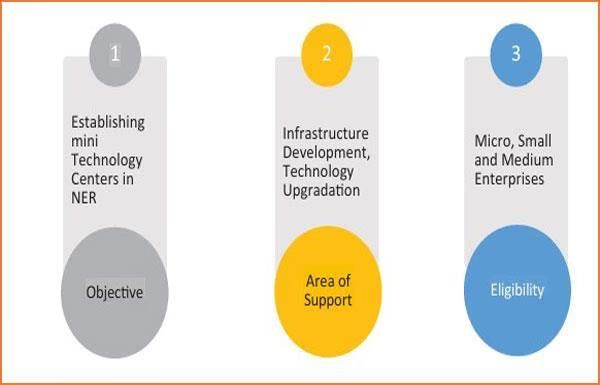 Why in News?
Why in News?
- The Government of India has released a significant report titled Designing a Policy for Medium Enterprises by NITI Aayog. This document emphasizes the crucial role that medium enterprises play in India's economic framework, highlighting their potential to significantly contribute to the nation's GDP and job creation.
Key Takeaways
- Medium enterprises, though only 0.3% of the MSME sector, account for 40% of MSME exports.
- They contribute approximately 29% to the GDP and employ over 60% of the workforce.
- These enterprises possess the capacity to innovate and grow, which is essential for achieving self-reliance and enhancing global competitiveness.
Current Challenges
- Access to tailored financial products is insufficient.
- Lack of necessary technology and R&D support restricts growth.
- Inadequate testing infrastructure hampers product quality.
- Training programs often do not meet industry requirements.
Proposed Policy Interventions
- Tailored Financial Solutions: Introduce a working capital financing scheme linked to turnover and implement a ₹5 crore credit card facility.
- Technology Integration and Industry 4.0: Upgrade technology centres into sector-specific India SME 4.0 Competence Centres.
- R&D Promotion Mechanism: Establish an R&D cell within the Ministry of MSME to leverage the Self-Reliant India Fund for national projects.
- Cluster-Based Testing Infrastructure: Develop sector-specific testing and certification facilities to improve compliance.
- Custom Skill Development: Align skilling programmes with the needs of medium enterprises.
- Centralized Digital Portal: Create a sub-portal within the Udyam platform for scheme discovery and compliance support.
Vision for Viksit Bharat @2047
The report envisions medium enterprises as pivotal in India’s journey towards Viksit Bharat by 2047. With strategic support in finance, technology, and infrastructure, these enterprises can enhance innovation, employment, and export growth. The focus is on inclusive policy design and collaborative governance to unlock their full potential.
In conclusion, the NITI Aayog report serves as a roadmap for empowering medium enterprises, recognizing their vital role in shaping the future of India’s economy.
Panchayat Advancement Index Version 2.0
Why in News?
- The National Writeshop on the Panchayat Advancement Index (PAI) Version 2.0 recently took place in New Delhi, drawing participation from key officials across various ministries and organizations. This two-day event marked the launch of the PAI 2.0 Portal, accompanied by the Local Indicator Framework Booklet and the Standard Operating Procedure for the fiscal year 2023-24. The initiative aims to improve performance assessment and governance within Gram Panchayats throughout India.
Key Takeaways
- The PAI is a framework created by the Ministry of Panchayati Raj to evaluate over 2.5 lakh Gram Panchayats.
- PAI 2.0 introduces a streamlined set of 147 indicators, a reduction of 72% from the previous version.
- The index focuses on key themes that impact local governance and community welfare.
Additional Details
- Panchayat Advancement Index: This index aligns with the Sustainable Development Goals and enhances local governance through data-driven insights.
- Key Themes:PAI 2.0 is structured around nine significant themes that include:
- Poverty-free and Enhanced Livelihoods Panchayat
- Healthy Panchayat
- Child-Friendly Panchayat
- Water-Sufficient Panchayat
- Clean and Green Panchayat
- Panchayat with Self-Sufficient Infrastructure
- Socially Just and Socially Secured Panchayat
- Panchayat with Good Governance
- Women-Friendly Panchayat
- Data Collection and Reporting: Gram Panchayats are encouraged to input accurate data into the portal to foster equitable development and transparency. Public display of scores is urged to enhance accountability and community participation.
- Future Implications: PAI 2.0 aims to connect local efforts with national and global commitments, complementing existing frameworks like the SDG India Index and supporting India's readiness for future Voluntary National Reviews on international platforms.
In conclusion, the PAI 2.0 serves as a significant tool in enhancing the governance and performance of Gram Panchayats in India, aiming to create a data-driven approach to local development and community welfare.
ASEAN-GCC Summit
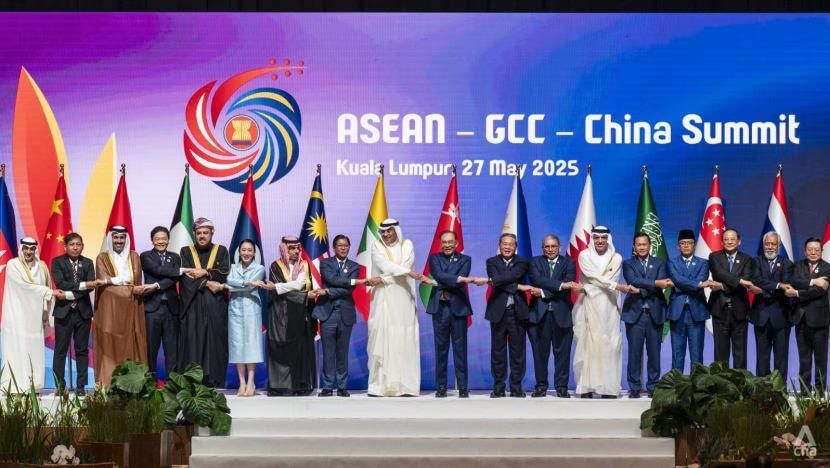 Why in News?
Why in News?
- The ASEAN-GCC summit, held on May 27, 2025, in Kuala Lumpur, signifies an important step towards enhancing interregional collaboration. This summit involves the ten-member Association of Southeast Asian Nations (ASEAN) and the six-nation Gulf Cooperation Council (GCC), along with Chinese Premier Li Qiang. The primary aim of the summit is to bolster economic resilience in light of global uncertainties and increasing U.S. tariffs.
Key Takeaways
- The summit addresses economic volatility caused by U.S. tariffs affecting several ASEAN countries.
- The GCC ranks as ASEAN’s seventh-largest trading partner, with trade volume reaching $130.7 billion in 2023.
- The gathering aims to strengthen ties to secure sustainable prosperity and navigate geopolitical challenges.
Additional Details
- Economic Implications: The GCC comprises oil-producing nations such as Bahrain, Kuwait, Oman, Qatar, Saudi Arabia, and the United Arab Emirates. Strengthening the ASEAN-GCC relationship is expected to create additional trade and investment opportunities, which are crucial for economic stability amid external pressures like U.S. tariffs.
- Geopolitical Dynamics: ASEAN maintains a policy of neutrality, engaging with both the U.S. and China. However, escalating tensions between these powers raise concerns about ASEAN's ability to balance its relationships effectively.
- Challenges such as overlapping territorial disputes in the South China Sea may affect relations within ASEAN members and with China.
The summit lays the groundwork for future cooperation between ASEAN and the GCC. Both regions are eager to deepen economic ties and enhance their crisis management capabilities. Continued dialogue is essential for maintaining stability and prosperity in a rapidly evolving global context.
AMCA Project
 Why in News?
Why in News?
- On May 28, 2025, India's Defence Minister Rajnath Singh approved the execution model for the Advanced Medium Combat Aircraft (AMCA) project. This initiative is pivotal in developing a fifth-generation deep penetration fighter jet for the Indian Air Force (IAF), marking a significant enhancement in India's indigenous defence capabilities and fostering a robust aerospace industry.
Key Takeaways
- The AMCA is a twin-engine, medium-weight multirole fighter jet.
- It features advanced stealth capabilities, including a stealth airframe and internal weapons bays.
- The project allows private and public sector companies to bid for contracts.
- The estimated development cost is around ₹15,000 crore.
Additional Details
- Execution Model: This model permits competitive bidding from both private and public sector entities, representing a departure from previous practices where contracts were mainly awarded to state-owned firms.
- Strategic Importance: India's entry into the fifth-generation fighter jet arena alongside nations like the US, Russia, and China underscores its growing defence ambitions and enhances its strategic autonomy amid evolving regional security challenges.
- Technological Advancements: The AMCA will incorporate cutting-edge technologies, including advanced avionics and electronic warfare systems. The engine development will involve international collaboration to mitigate risks.
- Self-Reliance: This initiative aligns with the Atmanirbharta (self-reliance) vision in India's aerospace sector, aiming to leverage indigenous expertise and strengthen the domestic defence industrial base.
In conclusion, the AMCA project is a landmark initiative that will not only enhance India's air power but also contribute to the country's strategic autonomy and self-reliance in defence capabilities. The Defence Research and Development Organisation (DRDO) aims to deliver the AMCA prototype by 2035, making it a critical milestone for India's aerospace ambitions.
New Regulations for NGOs Receiving Foreign Funding
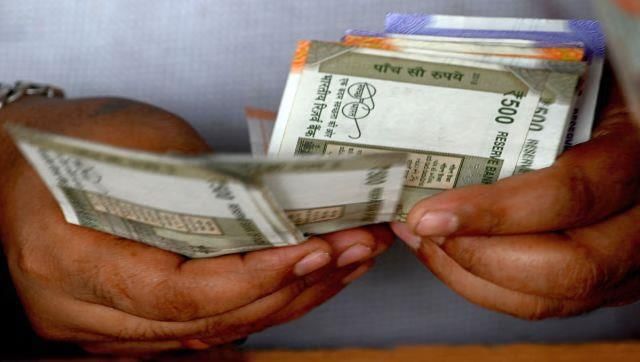 Why in News?
Why in News?
- The Ministry of Home Affairs (MHA) in India has introduced new regulations that impose stricter requirements on non-governmental organisations (NGOs) that seek foreign funding, particularly focusing on those engaged in publication activities. These changes aim to improve accountability and transparency in how foreign contributions are utilized, ensuring adherence to both national and international financial regulations.
Key Takeaways
- Stricter documentation requirements for NGOs seeking registration under the Foreign Contribution (Regulation) Act (FCRA).
- Mandatory compliance with the Financial Action Task Force (FATF) guidelines.
- Limitations on administrative costs for projects funded by foreign contributions.
- Specific regulations affecting NGOs involved in publication activities.
Additional Details
- Documentation Requirements: NGOs must now submit detailed financial statements and audit reports for the past three years, including information on assets, liabilities, receipts, payments, income, and expenditures.
- Certificate from Chartered Accountant: If financial statements do not outline activity-wise expenditures, a chartered accountant’s certificate is required to clarify fund allocation.
- FATF Compliance: NGOs are required to adhere to the Good Practice Guidelines set by the FATF, including a commitment letter from foreign donors to ensure that the donation amounts match what is pledged.
- Limitations on Administrative Costs: Administrative expenses funded by foreign contributions cannot exceed 20% of the total funds received, ensuring that most resources go towards social, educational, or cultural initiatives.
- Impact on Publication Activities: NGOs involved in publishing are restricted from disseminating newsletters unless they comply with the new guidelines, aimed at preventing misuse of foreign funds.
These regulations signify the government's commitment to enhancing transparency and accountability within the NGO sector, ensuring that foreign contributions are utilized effectively for their intended purposes.
Child Sexual Abuse Crisis
Why in News?
- Recent studies reveal a significant crisis regarding child sexual abuse, particularly in India. A global study published in The Lancet presents alarming statistics concerning the prevalence of sexual violence against children, based on data from 204 countries spanning three decades, from 1990 to 2023. The findings indicate that nearly one in three Indian women and over one in ten Indian men experienced sexual abuse before the age of 18, positioning India among the highest prevalence rates for women globally.
Key Takeaways
- 30.8% of Indian women and 13.5% of Indian men faced sexual violence during childhood.
- Globally, 18.9% of women and 14.8% of men reported similar experiences.
- 67.3% of female survivors and 71.9% of male survivors encountered sexual violence before adulthood.
- Underreporting may obscure the true extent of child sexual abuse.
- Both boys and girls are affected, with some regions reporting higher rates of abuse among boys.
Additional Details
- Underreporting: Many surveys show lower disclosures when face-to-face compared to anonymous methods. In 63 countries, there is no public data on child sexual abuse, complicating efforts to track trends or assess policy impacts.
- Impact on Boys: While traditionally focused on girls, the study indicates that boys are also significantly affected, with 13.5% of boys in India reporting sexual violence.
- Regional Prevalence: The Solomon Islands has the highest prevalence of childhood sexual violence for women at 42.6%, while Ivory Coast has the highest rates for men at 28.3%. India records the highest female prevalence in South Asia.
The study's authors advocate for a multisectoral response to address child sexual abuse, including strengthening child protection laws, enhancing survivor support services, and creating safer educational environments. It is essential to challenge entrenched patriarchal norms to eliminate the stigma surrounding male victimhood.
India's First Artificial Intelligence Special Economic Zone
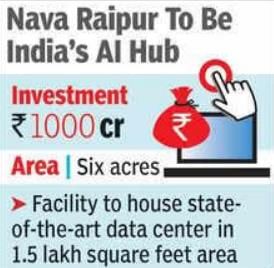
Why in News?
- India is set to establish its first Artificial Intelligence (AI) Special Economic Zone (SEZ) in Nava Raipur, Chhattisgarh. This significant initiative aims to position India as a global technology hub, enhancing AI research, development, and deployment across the country. The SEZ will be developed by RackBank Datacenters Pvt. Ltd. with a substantial investment of ₹1,000 crore.
Key Takeaways
- The AI SEZ will cover six acres and include a 1.5 lakh square foot data center.
- It is expected to support large-scale digital operations with four high-density data centers having a combined capacity of 80 megawatts.
- The project aims to create job opportunities, especially for youth in remote districts like Kanker and Sukma.
- Leading global technology companies such as Google, OpenAI, Microsoft, and Meta are expected to be attracted to the SEZ.
Additional Details
- Economic Impact: The project is anticipated to generate numerous employment opportunities, potentially reducing migration to larger cities.
- Regulatory Framework: The SEZ will receive tax exemptions and regulatory relaxations, encouraging both global and domestic firms to invest.
- As of now, India has approved 423 SEZs, with 270 operational across various sectors including IT, biotechnology, and manufacturing.
- The AI SEZ aligns with national initiatives like Digital India and Make in India, aiming to enhance technological capabilities in Chhattisgarh.
This initiative is poised to transform Chhattisgarh into a crucial player in the digital economy, supporting India's broader goals of technological advancement and innovation.
The Comprehensive Modular Survey – Telecom (CMS-T)
 Why in News?
Why in News?
- The recent report from the National Statistics Office highlights a significant gender disparity in mobile phone ownership in India, as revealed by the Comprehensive Modular Survey – Telecom (CMS-T) conducted in early 2025. The findings showcase that nearly half of rural women lack access to mobile phones, which contrasts starkly with men's ownership rates, raising concerns about digital inclusion and gender equity across the nation.
Key Takeaways
- 51.6% of rural women aged 15 and above do not own a mobile phone.
- 80.7% of men in the same demographic reported mobile phone ownership.
- In urban areas, 71.8% of women own mobile phones compared to 90% of men.
- Smartphone ownership is prevalent, with 75.6% of rural women and 79.2% of rural men owning smartphones.
Additional Details
- Survey Overview: The CMS-T was conducted from January to March 2025, surveying 34,950 households across 4,382 sampling units to gather data on mobile and internet usage.
- Mobile Phone Usage Trends: Despite lower ownership rates, 76.3% of rural women reported using a mobile phone in the last three months, indicating significant engagement with available technology.
- Youth Engagement: Among rural males aged 15-24, 98% reported using mobile phones, while 95.7% of females in the same age bracket did, emphasizing the critical need for access to technology among young women.
The survey underscores the urgent need for policies aimed at closing the digital gender gap. With a considerable portion of women lacking access to mobile phones, initiatives focused on enhancing ownership and promoting digital literacy are essential for empowering women and improving their participation in the digital economy.
Honorary Rank Promotion Scheme
Why in News?
- The Honorary Rank Promotion Scheme is a recent initiative launched by the Ministry of Home Affairs in India, aimed at recognizing the service of retiring personnel from the Central Armed Police Forces and the Assam Rifles. This scheme awards a one-rank higher honorary title to these individuals on their retirement day, intending to enhance their morale and self-respect without affecting their financial benefits.
Key Takeaways
- The scheme is initiated by the Ministry of Home Affairs.
- It applies to eligible personnel below officer rank in the Central Armed Police Forces and the Assam Rifles.
- The honorary rank is conferred on the retirement day without any financial or pension benefits.
- The awarded rank must be within the existing organizational structure of the service.
- The scheme does not alter the inter-se seniority order of personnel.
Additional Details
- Eligibility Criteria: Personnel must meet specific conditions, including fulfilling all promotion prerequisites at retirement, maintaining a clean service record, and receiving a minimum 'Good' rating in the Annual Performance Appraisal Report for the last five years.
- The granting of the honorary rank is based on a recommendation from the commanding officer and does not come with financial or pension benefits.
- Integrity certification and clearance from departmental inquiries are mandatory for eligibility.
This initiative marks a significant step towards acknowledging and honoring the contributions of security personnel in India. It reflects a growing appreciation for the sacrifices made during their service, aligning with broader efforts to enhance the welfare and dignity of those serving in the armed and paramilitary forces.
Operation Shield
 Why in News?
Why in News?
- India has recently encountered increased security challenges, especially along its western border with Pakistan. Following a devastating terrorist attack in Pahalgam that claimed 26 lives, the Government of India has stepped up its civil defense measures. On May 31, 2025, the Ministry of Home Affairs is conducting the second edition of a nationwide civil defense mock drill, named Operation Shield, aimed at enhancing preparedness for potential hostile threats.
Key Takeaways
- Objective: Enhance readiness of civil defense forces against emerging threats.
- Scope: Conducted in vulnerable regions including Jammu and Kashmir, Punjab, and more.
- Key Activities: Activation of air raid sirens, blackout protocols, and mock evacuations.
Additional Details
- Emergency Response Measures: Deployment of medical teams to handle injuries and coordination of emergency supplies.
- Coordination and Oversight: Led by the Additional Director General of Civil Defence, with oversight from the Directorate General of Fire Services and Home Guards.
- Funding and Support: Emergency powers invoked by the Home Ministry for financial support through the State Disaster Response Fund (SDRF).
This comprehensive approach of Operation Shield is crucial for preparing civil defense forces to effectively respond to real-life emergencies, ensuring the safety and security of vulnerable regions across India.
|
164 videos|798 docs|1153 tests
|
FAQs on Weekly Current Affairs (22nd to 31st May 2025) - General Test Preparation for CUET UG - CUET Commerce
| 1. What is the Rahveer Scheme for Accident Victims and how does it help? |  |
| 2. How does the Delhi Government's subsidy for rooftop solar panels work? |  |
| 3. What are urban forests and their significance in India? |  |
| 4. What challenges does India face in its renewable energy growth? |  |
| 5. What is the purpose of NITI Aayog’s report on medium enterprises? |  |
















